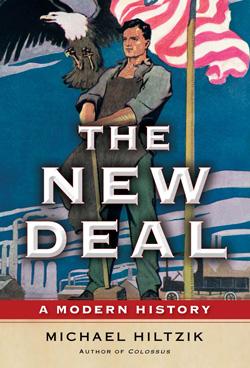El devenir tardío pero ejemplar del castigo a las conductas criminales de la dictadura argentina no solo ilustra la banalidad del mal, de la que nos hablara premonitoriamente Hannah Arendt, a contra-corriente del sionismo que tuvo que lidiar con el caso Eichmann, y su enjuciamiento, sino la importancia de recobrar la memoria y hacer "justicia" a las víctimas, a su familia, y a la sociedad ofendida. Los Kirchnner, no hicieron mutis por el foro al clamor de las víctimas, y los militares han venido siendo por fin juzgados por crímenes de lesa humanidad.
En Colombia seguimos viviendo cualquier tipo de tretas para hurtarle el bulto a esas responsabilidades, y ocultar el rostro de determinadores de la bestialidad como es patente en casos como los de la guerrillera Irma Franco, o el magistrado auxiliar Carlos Urán, "ejecutado" con un tiro de gracia. N d la R.
Cadena perpetua para Alfredo Astiz, el 'ángel de la muerte' de la dictadura argentina.
|
|
| EFEPor sus crímenes durante la dictadura, Alfredo Astiz se ganó el mote del ´ángel de la muerte´. - |
ARGENTINAEs el responsable de innumerables secuestros de personas que permanecieron cautivas en la ESMA, cárcel clandestina de la dictadura, entre ellas las fundadoras de las Madres de Plaza de Mayo y las monjas francesas Alice Domon y Leonie Duquet.
--
Semana
Jueves 27 Octubre 2011
-
La combinación de su ferocidad con los indefensos y su cara aniñada hicieron que el exmarino Alfredo Astiz, quien fue condenado este miércoles a prisión perpetua por crímenes cometidos durante la dictadura, se ganara el apodo del ‘ángel de la muerte’.
-
Sus acciones son el máximo símbolo del terrorismo de Estado que asoló a Argentina entre 1976 y 1983. Nació en la ciudad bonaerense de Mar del Plata el 8 de noviembre de 1951 y tras el golpe de Estado de 1976 fue asignado a la Escuela de Mecánica de la Armada (ESMA), en la zona norte de Buenos Aires y donde funcionó la principal cárcel clandestina del régimen de facto.
-
Como capitán de fragata perteneció al Grupo de Tareas 332 (GT 332), responsable de innumerables secuestros de personas que permanecieron cautivas en la ESMA, por la que los organismos humanitarios calculan que pasaron unos 5.000 detenidos, de los cuales solo sobrevivieron cerca de 100.
-
Las Madres de Plaza de Mayo fueron algunas de las primeras víctimas de su accionar delictivo, cuando el 10 de diciembre de 1977 Astiz "marcó" con un beso en la puerta de una iglesia a quienes unas horas después serían secuestradas por su grupo: Azucena Villaflor, Esther Ballestrino y María Ponce, las fundadoras de esa organización.
-
La misma suerte corrieron las monjas francesas Alice Domon y Leonie Duquet, quienes permanecieron cautivas en la ESMA hasta que fueron arrojadas al mar desde un avión militar en uno de los tristemente célebres "vuelos de la muerte".
-
Tiempo después el marino asesinó por error a la adolescente sueca Dagmar Hagelin al confundirla con una guerrillera.
-
En 1982, durante la guerra por la soberanía de las Malvinas, Astiz integró un grupo de comandos al que se le asignó la defensa del archipiélago de las Georgias del Sur y fue tomado como prisionero por las fuerzas británicas sin ofrecer resistencia alguna.
-
En 1986 y 1987 fue uno de los cientos de represores beneficiados por las leyes de Punto Final y Obediencia Debida, y en 1990 la Justicia francesa lo condenó en ausencia a prisión perpetua por los crímenes de las religiosas Domon y Duquet.
-
Siete años después, el juez español Baltasar Garzón solicitó su captura y extradición junto a las de otros 44 militares argentinos acusados de genocidio, y en 1998 fue expulsado de la Marina, institución a la que, decía, estaba "orgulloso" de pertenecer.
-
Antes había protagonizado un escándalo mediático al ofrecer una entrevista a un semanario en la que confesó su admiración por el guerrillero Ernesto ‘Che’ Guevara y su miedo durante los tiroteos callejeros, además de jactarse, con gran soberbia, de que algunos exmilitares le habían buscado para que liderara un nuevo golpe de Estado.
-
El año 2003 marcó el principio del fin para el antiguo marino, cuando el Parlamento anuló las denominadas "leyes del perdón" y se reactivaron cientos de causas por delitos de represión contra otros tantos militares y miembros de las fuerzas de seguridad, entre ellos Alfredo Astiz.
-
La "megacausa ESMA" lo llevó a una cárcel militar a comienzos del 2004 y dos años después un tribunal ordenó la reapertura de la investigación por la desaparición de la joven sueca Dagmar Hagelin.
-
Tras ser condenado a prisión perpetua en Italia, también en ausencia, Astiz fue trasladado en 2007 a una cárcel común, donde ha esperado el juicio por sus crímenes en la ESMA que esta semana llegó a su fin.
-
EFE




